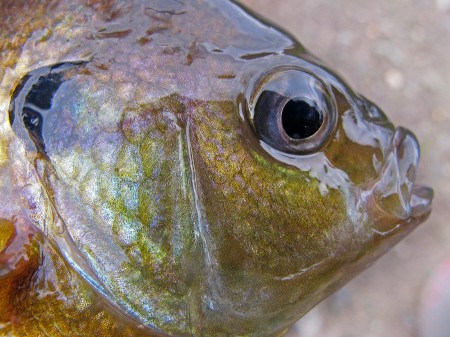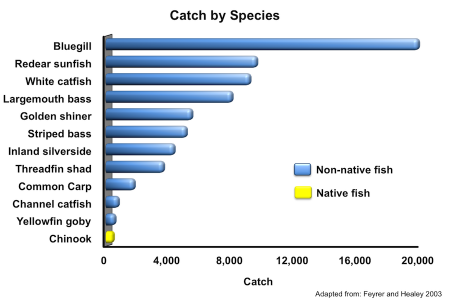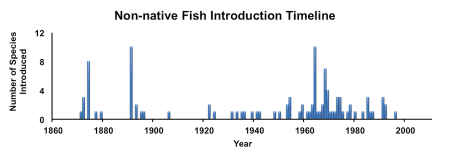Monday March 14, 2011


The bluegill (Lepomis macrochirus) may be the most abundant fish in the Sacramento-San Joaquin Delta. Data from a eight year long study of fish in the region, represented in the graph above, demonstrate that the south Delta is dominated by non-nave fish species (Feyrer and Healey 2003). According to the authors, “Only eight native species were captured, none of which represented more than 0.5% of the total catch.” The San Joaquin Delta ecosystem, along with many other western waterways, has been dramatically altered by the introduction of non-native species. Many of these species compete with native fish, such as juvenile salmon, for limited food and space (Marchetti 1999). Others are known to be significant predators of salmon smolts as they move through the Delta (Shapovalov 1936, Stevens 1966, Thomas 1967, Pickard et al. 1982, Merz 1994, Gingras 1997, Tucker et al. 1998).

Introductions of non-native fish into California began early in our state history. Although today people generally think of non-native species as accidental, arriving with ballast water or bait buckets, the majority of non-native fish introductions in California (69%) were deliberately planted by the California Fish and Game Commission and later the California Department of Fish and Game (Dill and Cordone 1997). Although the rationale for these introductions varied from providing sport fish with forage to controlling mosquitos, collectively these introductions have harmed native fish through predation, and competition for food and space. The San Francisco Estuary and Delta is recognized as the most invaded aquatic ecosystem in North America (Cohen and Carlton 1995). State surveys by the California Department of Fish and Game (2008) document at least 607 species of aquatic invaders in California’s estuarine waters. Currently introductions are occurring at a rate of one new invader every 24 weeks (Cohen and Carlton 1995).
Photo source: FISHBIO
